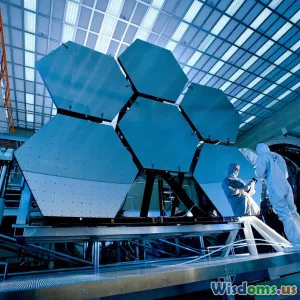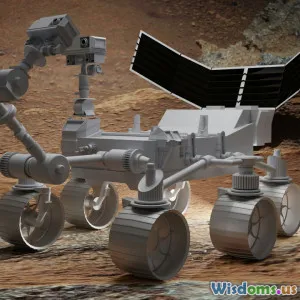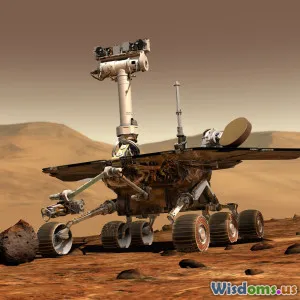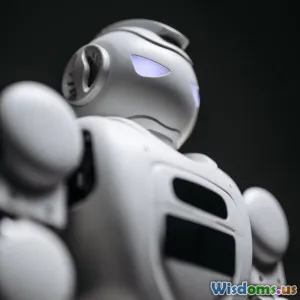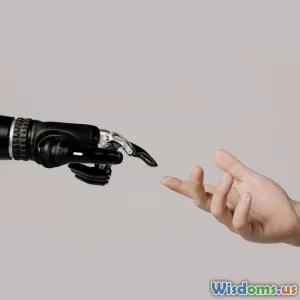
Are Hypersleep Pods on Starships Plausible An Experts View
9 min read Explore the scientific plausibility of hypersleep pods on starships, combining expert insights and futuristic visions. (0 Reviews)
Are Hypersleep Pods on Starships Plausible? An Expert’s View
Travel through space has always fired the imagination of both writers and scientists alike. From Jules Verne’s visionary voyages to today’s ambitious plans for interplanetary colonization, the challenge of sustaining human life during extended space journeys persists. Enter hypersleep pods—the science fiction marvel that promises to put travelers into a deep, suspended animation for the duration of their voyage. But how plausible are these pods on starships? How close is science to making this a reality? This article delves into current research, expert insights, and the biological and technological hurdles that stand in the way.
Introduction
Hypersleep pods are a staple of science fiction narratives, enabling characters to survive multi-decade journeys without aging or psychological strain. The concept taps into humanity’s desire to conquer the vast void by pausing biological processes to endure the long trek. However, translating this concept from fiction to fact requires the understanding and manipulation of complex physiological systems—challenges that modern science is only beginning to tackle.
With reported experimental successes in animal hibernation and induced torpor, scientists are cautiously optimistic. Yet, many hurdles remain, especially concerning humans' unique biology and the risks posed by space radiation and muscle atrophy during extended immobility.
The Science Behind Hypersleep Pods
What is Hypersleep or Suspended Animation?
Hypersleep, technologized as suspended animation or induced torpor, involves drastically lowering metabolic rates to minimize oxygen consumption and slow biological aging temporarily. It mimics natural hibernation observed in species such as bears, ground squirrels, or frogs. However, humans lack natural hibernation capabilities, making induced hypothermia or metabolic suppression biologically complex.
NASA and other space agencies have studied torpor as a practical approach for reducing life support burdens during long-duration missions. The idea is that by lowering body temperature and metabolism, astronauts require fewer resources and create less waste, thus easing the spacecraft’s life-support demands.
Current Advances and Experimental Studies
Several institutions have made headway in mammalian torpor research. For example, NASA's Twin Study with astronauts Scott and Mark Kelly has shed light on long-term human space travel impacts, indirectly motivating research into metabolic suppression.
Moreover, in 2020, researchers successfully induced a reversible state of suspended animation in mice by lowering body temperature (e.g., a study at the Fred Hutchinson Cancer Research Center). Although reversible hypothermia and metabolic suppression are promising, scaling these results to humans remains uncertain.
Companies like SpaceWorks have developed concepts for crew torpor systems designed to induce controlled hypothermia for days or weeks, intending to reduce spacecraft size and costs. However, inducing and maintaining such a state safely over months or years is an uncharted territory.
Technical Challenges
- Radiation Exposure: Cosmic radiation in deep space is heavily damaging to DNA. Even during hypersleep, biological repair mechanisms must counteract cumulative damage, or astronauts risk fatal cancers or genetic damage.
- Muscle Atrophy and Bone Loss: Even in normal weightlessness, astronauts suffer muscle degradation. Hypersleep immobilizes the body even further, compounding these effects unless countermeasures are in place.
- Neurological and Psychological Risks: Prolonged unconsciousness might lead to cognitive impairments or psychological distress upon revival, complicating mission outcomes.
- Metabolic Control: Precisely controlling metabolic slowdown without causing organ failure or immune decline demands technology beyond current capabilities.
Expert Perspectives: Optimism and Caution
Dr. Charles Howell, a neuroscientist focusing on induced torpor, states: "While the concept of hypersleep for long space flights is tantalizing, we’re still in the infancy of understanding how to safely and reversibly place humans into such states. It’s biologically complex and demands breakthroughs in medicine and engineering.”
Conversely, aerospace engineer Dr. Elena Ramirez notes, "For missions beyond Mars, traditional life support methods may not be feasible—some form of metabolic suppression, like torpor, will likely be indispensable if we want sustainable interstellar exploration.”
Dr. Persis Drell of Stanford University reminds us of ethical considerations: "Implementing hypersleep will involve risks that must be carefully weighed, including the potential for long-term health complications or unanticipated outcomes.”
These views indicate that though hypersleep pods captivate imaginations and offer a compelling solution, rigorous research and cautious optimism dominate the expert community.
Hypersleep in Popular Culture vs. Reality
Science fiction portrays hypersleep pods in iconic franchises like Star Trek, Alien, and The Expanse, showing seamless cryogenic sleep allowing travel to distant star systems. Often, these pods are depicted as safe, reliable, and allowing passengers to wake without complications.
However, current science reveals vast discrepancies: natural hibernators perform extensive physiological adjustments evolved over millennia to protect organs and brain tissue at low metabolism rates—a process humans cannot replicate or trigger easily.
Moreover, fictional pods often ignore radiation dangers or muscle and bone loss, which in reality pose profound risks over prolonged space travel. This gap between fiction and feasibility highlights the technological leaps required.
Alternative Approaches Under Consideration
While hypersleep remains an ongoing pursuit, other technologies are either in development or conceptualized to address long space journeys’ biological challenges:
- Generation Ships: Spaceships supporting self-sustaining generations born and dying during the journey, avoiding hypersleep requirements but introducing social and ethical challenges.
- Artificial Intelligence and Robotics: Advanced AI piloting ships and maintaining conditions to allow passengers to remain awake but experience reduced physical roles.
- Cryopreservation Advances: Research into safely freezing and reanimating human tissue and eventually entire organisms could underpin future hypersleep pods but is currently rudimentary.
These alternatives provide different lenses through which humanity might tackle space travel, underscoring the complexity and multidisciplinary nature of these challenges.
Conclusion: The Road Ahead
Hypersleep pods on starships remain an enthralling but complex objective straddling the boundary between science fiction and science fact. Current biological research into induced torpor, experimental hypothermia, and suspended animation is advancing, yet the leap from rodent models to safe, long-duration human hypersleep is monumental.
Technological hurdles involving radiation shielding, muscle atrophy prevention, metabolic control, and psychological effects are substantial. Moreover, ethical considerations about risks and potential health impacts are crucial as space agencies and private enterprises explore these frontiers.
Nevertheless, as humanity pushes toward Mars and beyond, hypersleep remains one of the most promising technologies to address long voyage sustainability. With continued multidisciplinary research and cautious advances, a future where hypersleep pods facilitate the stars may be decades away but remains within the realm of possibility rather than fantasy.
Space travel challenges the limits of human biology and technology. Hypersleep pods could revolutionize interstellar travel—but for now, the dream sleeps alongside the science.
Rate the Post
User Reviews
Popular Posts










